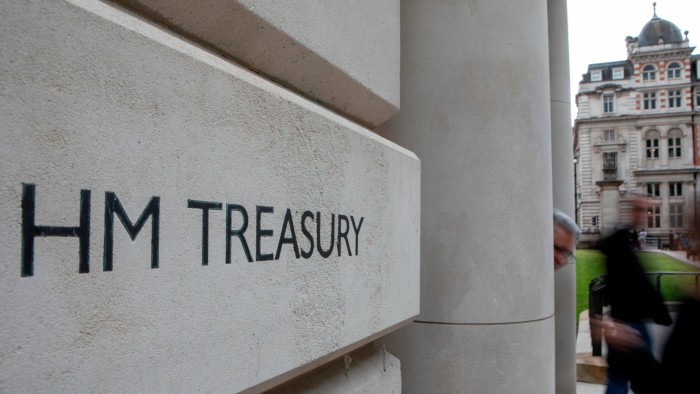The early weeks of 2025 have been awash with news headlines about a bond market sell-off. However, investment platform AJ Bell points out that there are always two sides to every market story — and the rise in yields as bond prices fall means retail investors’ appetite for UK government bonds is picking up.
In January, the UK Treasury sold £4.25bn-worth of five-year gilts at an average yield of 4.49 per cent, with £12.74bn-worth of bids received. AJ Bell customers were among those fuelling this strong demand in the auction.
And they were not alone. At the end of last year, many analysts were pointing out that the time had come to invest in bonds. The recovery from 2022, the worst year for bonds, has been robust. “Some high yield managers have been doing as well as global equities over the past two years,” points out Tideway Wealth’s investment director Nick Gait.
Bonds can offer an attractive income that is regular, predictable and contractual. But they are also good portfolio diversifiers, able to offset poor performance when equity markets decline in value — and some wealth managers already believe the bull market in equities is looking a bit long in the tooth.
Tideway Wealth even has some clients whose self-invested personal pensions (Sipps) are 100 per cent invested in fixed income. The rationale is that, while the US-led bull market in equities may continue, the downside risks are increasing. Bonds with real yields may be a good alternative for older investors — or those in pension drawdown.
“The higher government bond yields go, the greater the competition against equities for investors’ money,” says Dan Coatsworth, investment analyst at AJ Bell. “At some point, investors will take the view that they can get a decent yield from bonds for lower risk compared with investing in stocks.”
Another factor that has made fixed income look more attractive is a slowdown in inflation after years of rapidly rising consumer prices.
“Inflation moving from a high rate to a low or normal rate is not something we have experienced in a generation, so investors have forgotten just how attractive this environment can be for fixed income,” notes April LaRusse, head of investment specialists at Insight Investment.
Mateusz Malek, head of bond research at Killik & Co adds: “Although we have recently entered the period when inflation is expected to reaccelerate slightly, overall, it is forecast to remain contained and below the level of yields offered by bonds.” Interest rate cuts could also boost bond returns.
However, Thomas Becket, co-chief investment officer of Canaccord Genuity Wealth, thinks gilts have been selling off partly because of a repricing of UK interest rate expectations.
This wobble in the market also serves as a reminder that bonds are not risk free. “Investors are worried about extra borrowing by the UK government to achieve its plans, and the uncertain outlook for the economy given widespread pessimism by businesses and consumers,” says Coatsworth.
However, some view the recent yield movements as largely an overreaction to global political uncertainty.
“We believe gilt yields will fall over 2025/26, as the Bank of England unwinds their current restrictive stance, and will eventually reach a level consistent with the fundamentals of the UK economy,” says Matt Tickle chief investment officer at Barnett Waddingham.
In the UK, private investors can access gilts and T-bills, but investing in corporate bonds is heavily regulated and limited only to professionals. Some wealth managers, such as Killik, will build portfolios of corporate bonds for their clients. Others, like Tideway, use professionally managed bond funds, such as Royal London UK Government Bond, or, for investment-grade credit, the Man Group Sterling Corporate Bond. “We have spoken to our bond fund managers in the wake of recent movements and they are optimistic of high single-digit returns again in 2025,” says Tideway’s Gait.
Even so, investors should always be aware of the two core risks: duration (the measure of interest rate risk the portfolio aims to take) and credit quality (how much risk you’re willing to take to achieve returns).
“Having any certainty over the longer end of the yield curve is perilously hard,” Becket says. “There is no clarity on the outlook for any of interest rates, inflation and government policy improving.”
Gait adds: “The greater than 5 per cent return now available on long duration gilts is clearly attracting retail investors, particularly on low coupon bonds where gains will be tax free. But many, I suspect, will underestimate the risks when you buy longer duration.”
The most popular gilts with retail investors using the Interactive Investor platform at the end of 2024 included T26 and TN28, maturing at the end of January 2026 and January 2028. Because these gilts have coupons of 0.125 per cent and trade below their par value, most of the return comes from the £100 redemption value of each gilt on maturity, which is capital gains tax free — making them popular with investors holding them outside of tax-advantaged individual savings accounts, or SIPPs.
“Gilt prices move when market conditions change, but gilts maturing soon are less volatile than longer-dated gilts,” says Sam Benstead, fixed income lead at Interactive Investor. “If you want a near-guaranteed return, then direct gilts are a good option, particularly bonds maturing soon.”
Read the full article here

